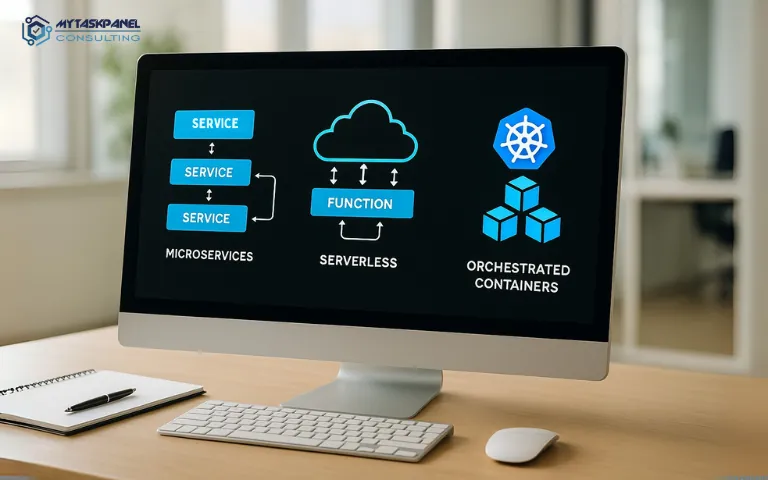That’s why implementing testing strategies in distributed architectures is no longer optional—it’s essential. It’s not just about validating isolated functions, but also testing component interactions, managing latency, tolerating failures, and verifying the integrity of the entire system. In this article, we’ll explore key strategies for testing distributed architectures, along with their benefits, limitations, and practical examples.
What is testing in distributed architectures?
Testing in distributed systems involves validating not only the individual logic of each service but also their interactions and collective behavior. The challenges are unique:
- Intermittent network failures.
- Eventual consistency issues.
- External dependencies.
- Non-deterministic environments.
- Evolving APIs.
These factors require applying multiple layers of testing, from the most basic (unit tests) to the most complex (end-to-end and production testing).
1. Unit testing
Focuses on testing isolated functions or modules without external connections. Dependencies are simulated using mocks. Example: testing a discount-calculation function without relying on external services
Advantages:
- Fast, cost-effective, and easy to automate.
- Detects logical errors early.
- Ideal for practices like TDD.
Drawbacks:
- Doesn’t verify integrations or real workflows.
- May create a false sense of security.
2. Integration testing
Evaluates how two or more modules, services, or components interact. Example: testing whether the «checkout» service communicates correctly with the «payment» service.
Advantages:
- Verifies service compatibility.
- Detects communication or configuration errors.
Drawbacks:
- Requires configured environments.
- May be unstable with frequent changes.
3. Contract testing
Validates that a service’s public interface (API) meets the expectations of its consumers. Common in microservices using tools like Pact. Example: ensuring the JSON response format from one service doesn’t unexpectedly change for another that consumes it.
Advantages:
- Detects breaking changes in service communication.
- Enables parallel development.
- Doesn’t require a full environment setup.
Drawbacks:
- Contracts must be kept up to date.
- Doesn’t test internal logic.
4. End-to-End (E2E) testing
Simulates real-world scenarios from the user interface to backend services. Example: simulating a purchase flow from login to order confirmation.
Advantages:
- Ensures the entire system functions as expected from the user’s perspective.
- Validates complete workflows.
Drawbacks:
- Slow and fragile when systems change.
- Hard to maintain at scale.
5. Testing in isolated environments
Involves setting up controlled environments (e.g., staging, local containers) to perform realistic testing before deployment. Example: using Docker Compose to spin up all application services and test them together.
Advantages:
- Isolates errors without affecting production.
- Enables deep debugging.
Drawbacks:
- High infrastructure cost.
- May not fully replicate production conditions.
6. Production testing (observational)
Monitors real system behavior with real users. Often combined with feature flags, canary releases, or A/B testing. Example: releasing a new feature to only 5% of users and analyzing metrics before a full rollout.
Advantages:
- Gathers real usage data.
- Detects hard-to-simulate bugs.
Drawbacks:
- Risk of user impact.
- Requires robust monitoring and immediate rollback capabilities.
Best practices for testing distributed systems
- Automate from the start: use CI/CD pipelines to run all types of tests on every change.
- Active observability: implement structured logging, distributed tracing, and monitoring dashboards.
- Version your APIs: avoid breaking changes for systems with multiple consumers.
- Use feature toggles: enable or disable features in real-time without redeployment.
- Handle failures gracefully: design tests that tolerate network issues or service downtime.
Recommended tools
- Unit testing: JUnit, Pytest, Jest.
- Integration testing: Postman, REST Assured, Testcontainers.
- Contract testing: Pact, Spring Cloud Contract.
- E2E testing: Cypress, Playwright, Selenium.
- Production monitoring: Grafana, Prometheus, Datadog, Sentry.
In modern systems, testing in distributed architectures is a foundational pillar. It’s not about applying a single strategy but combining multiple levels of testing to cover everything—from business logic and service integration to user experience and production stability.
Companies that invest in structured testing achieve faster development cycles, safer deployments, and a more reliable user experience. If your system is distributed, your testing strategy must be too.
Looking to implement an effective testing strategy for your distributed system?
At MyTaskPanel Consulting, we help companies automate and scale testing in complex environments. Contact us and take your software quality to the next level.

